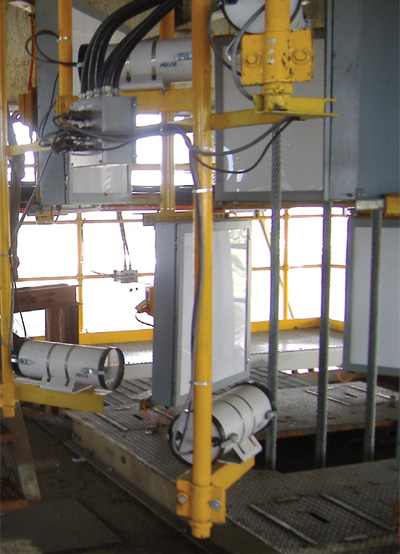Bestech, an engineering, automation and software development company, has acquired the rights to a ground-breaking wire rope inspection system developed by SEER Technology and the St. John’s, Newfoundland-based Centre for Cold Ocean Resource Engineering.
RopeInspectortechnology eliminates the need to slow hoists down to a crawl for 20 to 30 minutes a day to allow for manual inspection of the rope. Three systems are currently installed: one at Xstrata Copper’s Kidd Mine in Timmins and two in Australia at Newcrest Mining’s Telfer Mine and BHP Billiton’s Leinster operation.The acquisition of RopeInspector by Sudbury-based Bestech brings the technology back to where it was conceived by Inco personnel and its development funded through the CAMIRO-managed Deep Mining Research Consortium.SEER Technology didn’t have the resources to effectively market the solution, said Bestech sales and marketing manager Pat Dubreuil. “They figured that word of mouth would suffice, but in the mining industry, you still have to knock on the door and make your pitch. Mines don’t adopt technology on a whim.”The automated, computer visioning system performs a 360 degree daily visual inspection of a rope with the hoist travelling at up to 20 metres a second. It automatically identifies rope defects, including fraying, necking and birdcaging, and transfers images of the suspected defects to rope monitoring and reporting systems, where they can be viewed and assessed by the mine’s rope inspector in the comfort of his office.
Normally, explained Dubreuil, ropes have to be slowed to two or three metres a second for inspection with the human eye, detracting from the hoist’s productivity.
“We just finished doing a business case for a potash mine in Saskatchewan,” he said. “Their skipping capacity is worth about $1,700 per minute and they’re down 20 minutes a day.”
That’s 140 minutes a week times $1,700, or $238,000 worth of potential increased production every week.
The three mines using RopeInspector “love it,” said Dubreuil. “It pays for itself in under a month. The return on investment is incredible, so we want to make sure that the rest of the world knows about it.”
The RopeInspector technology still relies on mine personnel to review the suspected defects and decide whether they merit a manual inspection.
The system tells the operator the location of the defects, so “He can call the hoistman and say ‘bring the rope back up to this point. I need to take a look at it,’” said Dubreuil.
In addition to viewing images of suspected defects identified by the system, the operator can also do a full rope visual inspection offline.
“Everything is tracked and logged, so when the Ministry of Labour comes in, all the records are there.”
Bestech will be upgrading the system installed at Xstrata Copper’s Kidd Mine, making some software modifications and equipping it with new light panels and cameras for improved performance.
Additional enhancements to the technology are also planned to reduce the number of false positives and allow for lay length calculations.
Labour ministry officials in both Canada and Australia have taken note of the technology and have indicated that they have “no issues” with its use.
The system is considered to be safer given the fact that manual inspection at two or three metres per second is a monotonous task easily compromised if the inspector blinks or is distracted for any reason.
Bestech has assumed responsibility for sales, service and further development of the technology and plans to aggressively market it to its existing customer base.


